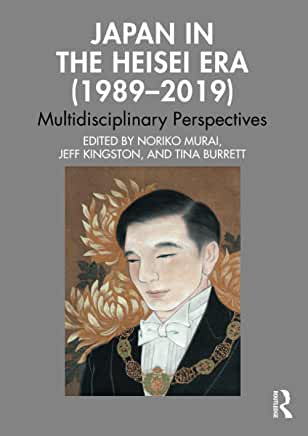This just published book covers a multitude of topics: the economy, politics, society, art and culture, the Emperor, religion, diversity, and ‘Cool Japan.’ You can get a 20% discount and free shipping by using the code Asia230 when you check out. You can also see the Table of Contents at https://www.routledge.com/Japan-in-the-Heisei-Era-19892019-Multidisciplinary-Perspectives/Murai-Kingston-Burrett/p/book/9780367221676
My own chapter focuses on explaining why the “lost decades” happened and what are the prospects for the future. Initially, came denial. Policymakers believed Japan was just going through a rough patch and would soon recover. Not until the banking crises of the late 1990s did the reality begin to take hold. Even then, policymakers and economists saw Japan’s travails as mostly a problem of weak demand, one that could be cured with enough fiscal and/or monetary stimulus. Not until the ascent of Junichiro Koizumi in 2001 did core leaders acknowledge that, as Koizumi put it: “No growth without reform.” Unfortunately, neither Koizumi nor his successor actually implemented the needed reforms that they promised. The good news is that, amidst all of this bad news, there has been a quiet change in generational attitudes, gender relations, technology, and other social changes. In combination, these trends give Japan the best opportunity in a generation to cure what ails it. This shift is the focus of my forthcoming book, due in early 2023.
My chapter begins:
Back in the 1950s, when my American parents bought me a toy and it broke three days later, the odds were that the label would say ‘Made in Japan.’ As late as 1957, preeminent Japanologist Edwin Reischauer was still wondering whether Japan could ever export enough to pay for indispensable imports of food and raw materials.
How Japan’s image had changed by the dawn of the Heisei era, when it seemed to some that, in its march up the technological ladder from textiles to TVs, from steel to computer chips, Japan was capturing the future. Many fearful American high-tech companies lobbied for a hawkish trade policy. One of America’s normally most astute economists, Lawrence Summers, a future Treasury Secretary, wrote that ‘This all raises the possibility that the majority of American people who now feel that Japan is a greater threat to the U.S. than the Soviet Union are right.’...
Only a month later, Japan’s roof caved in. It began with a popping of the asset bubble in stocks and real estate...Soon, the bust spread to the rest of the economy. The nation that had grown a stunning 9 per cent a year from 1955 to 1973 and at a 4 per cent rate from 1975 to 1991 forgot how to grow. For the next three decades, now called ‘the lost decades,’ the growth rate plunged to only 0.9 per cent. Pre-COVID forecasts projected that, without enough reform to spark a productivity revolution, growth would likely descend to 0.5 per cent per year through 2030.
No wonder many Japanese wonder whether their country will ever be vibrant again. Nonetheless, quiet changes throughout civil society during the Heisei era tell us that, with the right policies, revival is possible. The first requirement is a correct diagnosis of why the decades were ‘lost.’


There is a 20% discount and free shipping if you buy directly from Routledge by inputting the code Asia230 as you check out. It's at https://www.routledge.com/Japan-in-the-Heisei-Era-19892019-Multidisciplinary-Perspectives/Murai-Kingston-Burrett/p/book/9780367221676
Never mind...found TOC.